Last updated: September 24, 2023
A tiny version of an orange with an exotic name; that is perhaps the best and quickest way to describe a kumquat.
Kumquats really are an interesting citrus fruit, and not just because of their looks and name. The small kumquat also packs a punch when it comes to nutrition and flavors.
After spotting them in my local grocery store, I had the pleasure of eating a few kumquats, and I have since been somewhat intrigued by this fruit.
In this article, I am going to explain everything I know about the kumquat fruit, including its origins, its nutritional profile, where best to find it, and more.
What Is a Kumquat?
Also known as cumquat or Fortunella margarita, the small kumquat is a citrus fruit, very similar to the orange, but much smaller in size.
The fruit comes from a group of fruit-bearing trees that go by the Latin name of Citrus japonica which are part of the Rutaceae family of flowering plants.
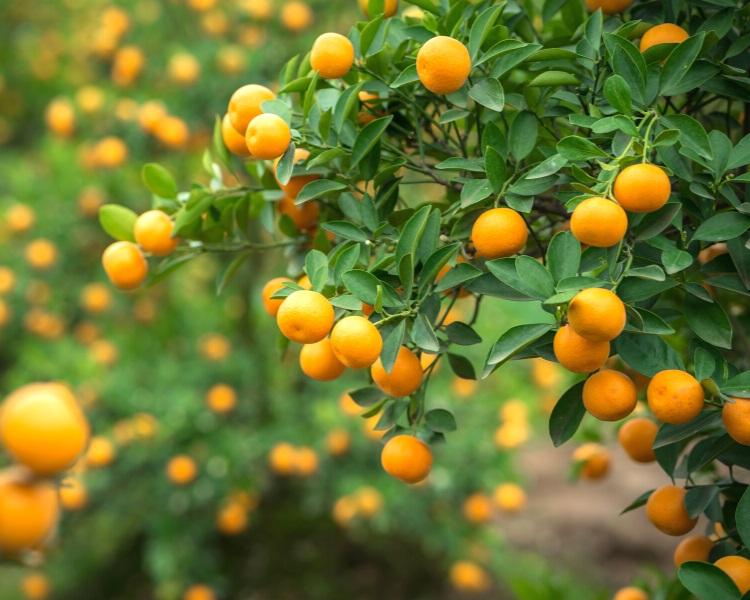
It’s usually hard to tell from pictures, but a kumquat really is a small fruit. It is about the size of a large grape or an olive. When ripe, kumquats typically have a bright orange color and green when they are unripe.
The name kumquat is derived from the Cantonese language and means “golden orange” or “golden tangerine”. The fruit is native to China and has also long been cultivated in other parts of South Asia and Asia-Pacific, such as Japan, the Philippines, and India.
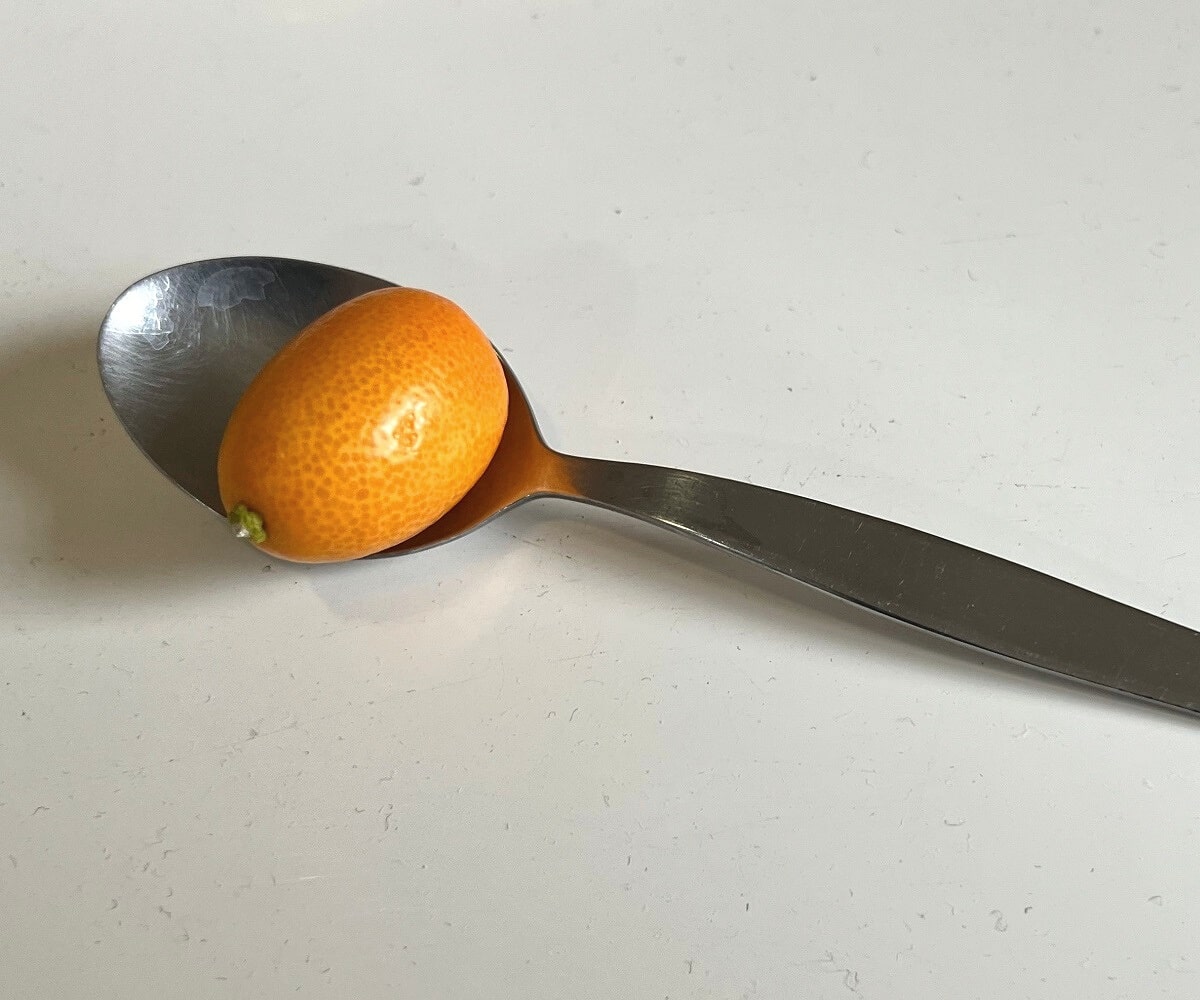
The fruit has always played a role in traditional Chinese medicine and has often been used to treat minor inflammatory ailments, such as colds and coughs.
Because kumquats can be cultivated in colder, non-tropical climates, they have also been introduced to, and grown in, Europe and North America.
Kumquat Varieties
Kumquats come in a variety of cultivars, all with slightly different looks.
- Nagami kumquats:
These are the most common cultivars found in the US. They have a light orange color when ripe, similar to a navel orange. They are about the size of a large olive and have a similar shape with rounded ends. - Centennial kumquats:
These are also fairly popular across the world. They are a little larger than Nagamis and have a pointed end like a lemon. The color and flavor are similar, but these are much juicier. - Mandarinquats:
These are a cross between a kumquat and a mandarin. This fruit has a similar shape and size to the centennial but is much more tart. It makes a great addition to teas, jams, or as a garnish on fish.
Consuming Kumquats
Kumquats can, and should be, eaten raw. What is so surprising, though, is that, unlike oranges, kumquats don’t need to be peeled.
The peel is indeed perfectly edible and actually tastes sweet. This works well with the flesh, which, like most citrus fruits, has a sour taste. The seeds can also be eaten, but they do taste quite bitter.
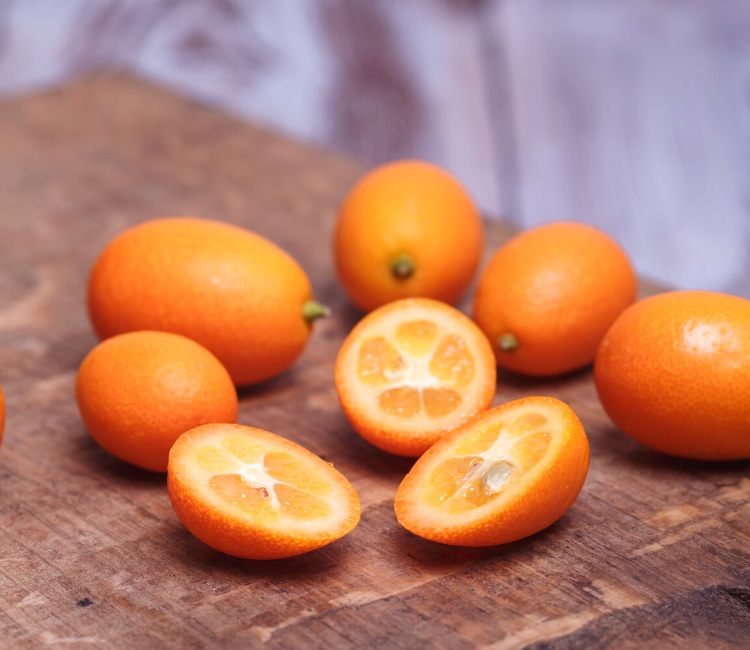
The fact that you can eat a kumquat whole, without peeling, makes it an excellent healthy snack. Sweet, sour, and bitter flavors are all mixed in one small citrus fruit!
Also, and this may not be very obvious, the sweet and sour taste makes kumquats a good ingredient in various recipes, such as cocktail drinks, salads, and meat dishes.
For a more comprehensive guide including handy recipe tips and ideas, read my article explaining how to eat kumquats.
Where to Find Kumquats
Because kumquats are also grown in regions outside Asia, they are relatively easy to find. At least, it’s easier than most other exotic fruits.
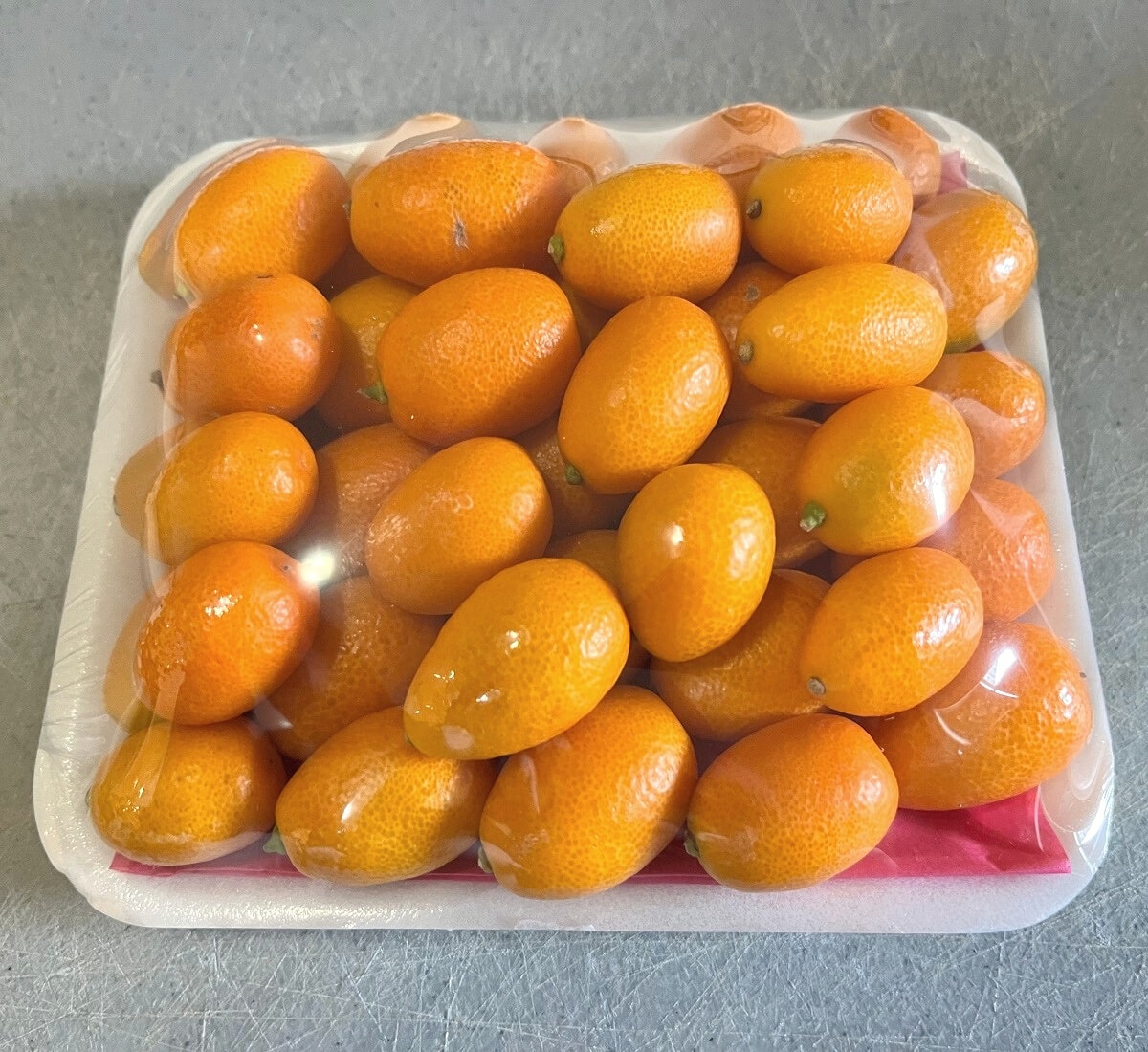
You may not see them in large grocery store chains, but if you try the smaller Asian grocery stores, gourmet food markets, or farmers markets, you will most likely find them.
Nutritional Profile of Kumquats
Let’s go for a deep dive into the nutritional profile of the mighty kumquat fruit. This is always my favorite part because I’m a bit of a nerd when it comes to stats, facts, and data.
As you can see in the table below (data derived from the USDA website), kumquats are very nutritious. Some of the vitamins and minerals that stand out are vitamin C (no surprise, because the kumquat is a citrus fruit), calcium, iron, magnesium, and B vitamins.
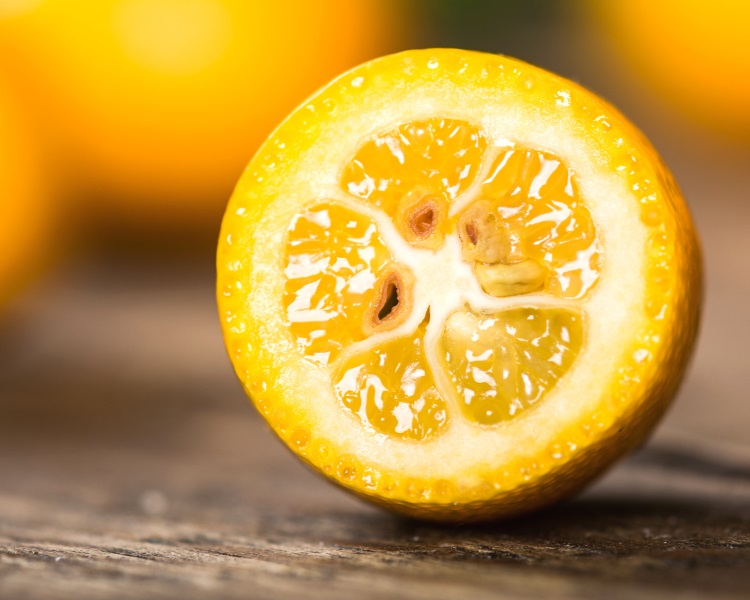
Also worth noting is the carbohydrate content. The amount of dietary fiber is significant, with 6.5 grams per 100 grams. The sugar part is also relatively high, with 9.36 grams, but that can be expected from most fruits and isn’t something to worry about when consumed in moderation.
Remember that the stats below are for 100 grams worth of raw kumquats.
| Kumquat Nutritional Profile (raw, 100 g) | |
|---|---|
| Water | 80.85 g |
| Energy | 71 kcal |
| Protein | 1.88 g |
| Fat | 0.86 g |
| Carbohydrates | 15.9 g |
| >> Dietary fiber | 6.5 g |
| >> Sugars | 9.36 g |
| Minerals | |
| Calcium | 62 mg (6% DV) |
| Iron | 0.86 mg (7% DV) |
| Magnesium | 20 mg (6% DV) |
| Manganese | 0.135 mg (6% DV) |
| Phosphorus | 19 mg (3% DV) |
| Potassium | 186 mg (4% DV) |
| Sodium | 10 mg (1% DV) |
| Zinc | 0.17 mg (2% DV) |
| Vitamins | |
| Vitamin A (RAE) | 15 µg (2% DV) |
| Vitamin B1 (Thiamine) | 0.037 mg (3% DV) |
| Vitamin B2 (Riboflavin) | 0.09 mg (8% DV) |
| Vitamin B3 (Niacin) | 0.429 mg (3% DV) |
| Vitamin B6 | 0.036 mg (3% DV) |
| Vitamin B9 (Folate) | 17 µg (4%) |
| Vitamin C | 43.9 mg (53%) |
| Vitamin E | 0.15 mg (1%) |
| Sources: USDA, Wikipedia | |
Benefits
Please note that, like most fruits, kumquats are a healthy treat and have a great nutritional profile, but they don’t necessarily stand out. All of the vitamins and minerals in kumquats can also be found in other, more common, fruits and vegetables.
In other words, there is no need to start eating kumquats today to take advantage of their nutrients. Maintaining a balanced diet with different fruits and vegetables is always the best way to go.
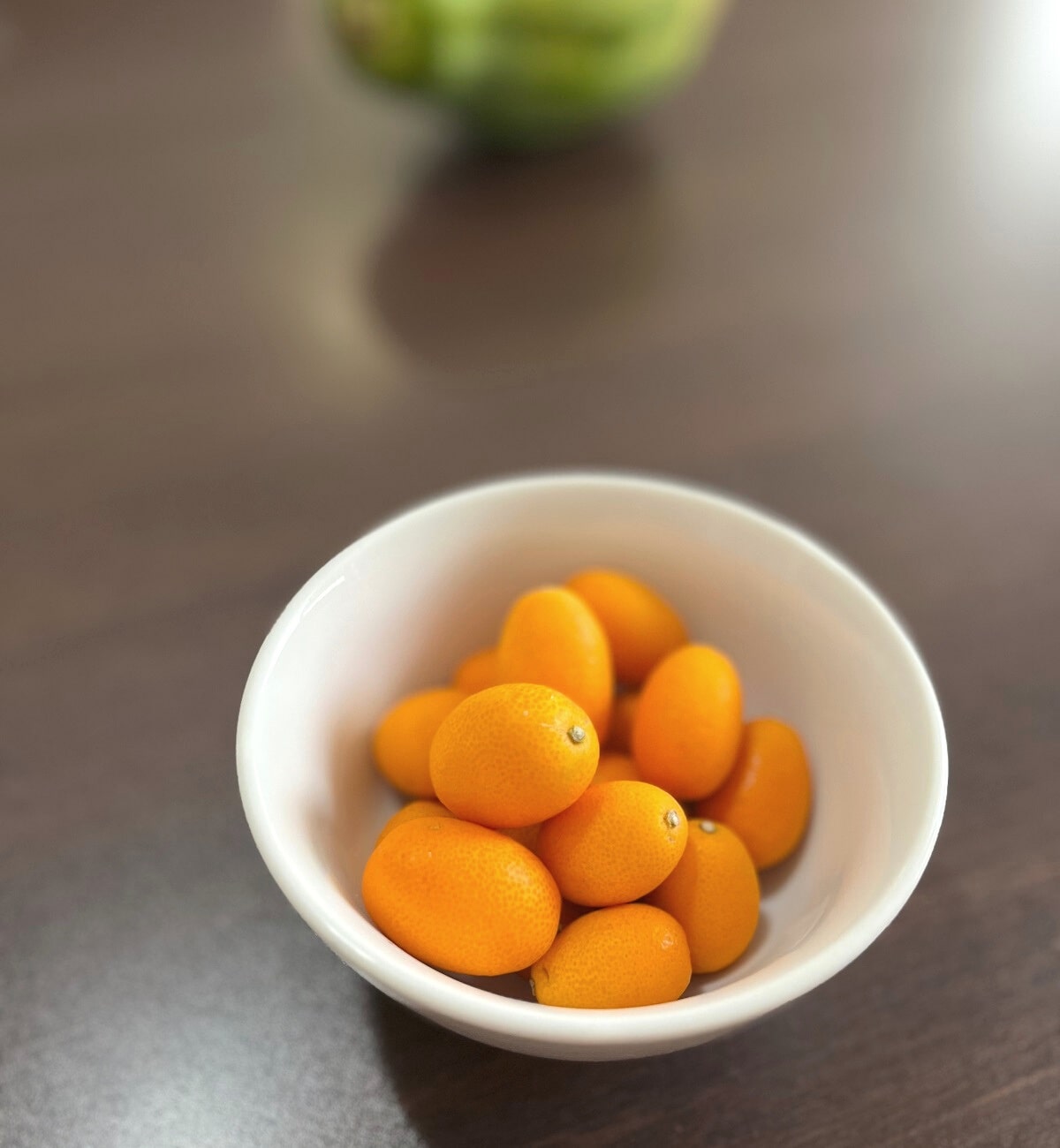
With that in mind, let’s take a look at some of the potential nutritional benefits we can expect from eating kumquats.
1. Source of Vitamin C
Like all citrus fruits, kumquats are a great source of vitamin C, an essential nutrient that supports a number of important functions in the human body.
Also known as L-ascorbic acid, vitamin C acts as an antioxidant and helps to strengthen our immune system.
2. Source of Dietary Fiber
The kumquat is an excellent source of dietary fiber, especially the peel. With 6.5 grams of fiber per 100 grams, the tiny kumquat does stand out when it comes to fiber content compared to many other fruits.

Fiber is essential in various ways, but its main benefit is that it supports gastrointestinal health.
Dietary fiber works as a natural laxative, so that our bodies are better able to properly process the food we consume. It helps to prevent constipation and also promotes healthy gut bacteria.
3. High in Antioxidants
Kumquats contain flavonoids, which are compounds with antioxidant and anti-inflammatory properties that help to lower blood pressure and cholesterol levels.
Interestingly, the peel contains most of the flavonoids, rather than the flesh, which is another good reason to eat kumquats as whole fruits.
The peel also contains essential oils, which can have antioxidant and antimicrobial effects.
Exotic fruits from around the world.
Final Thoughts
I hope this guide has triggered your enthusiasm about kumquats and that you will try them out yourself. Despite its small size, the kumquat is a delicious and unique citrus fruit.
As you may have worked out, I love trying out new fruits and veggies. So, whenever I go to the grocery store, I always keep an eye out for something new to bring home.
And if I really like them, I study and write about them too. Have you ever tried snake fruit, for example? Or rambutan fruit, perhaps? But my personal favorite is still, and always will be, dragon fruit, the most delicious of them all.
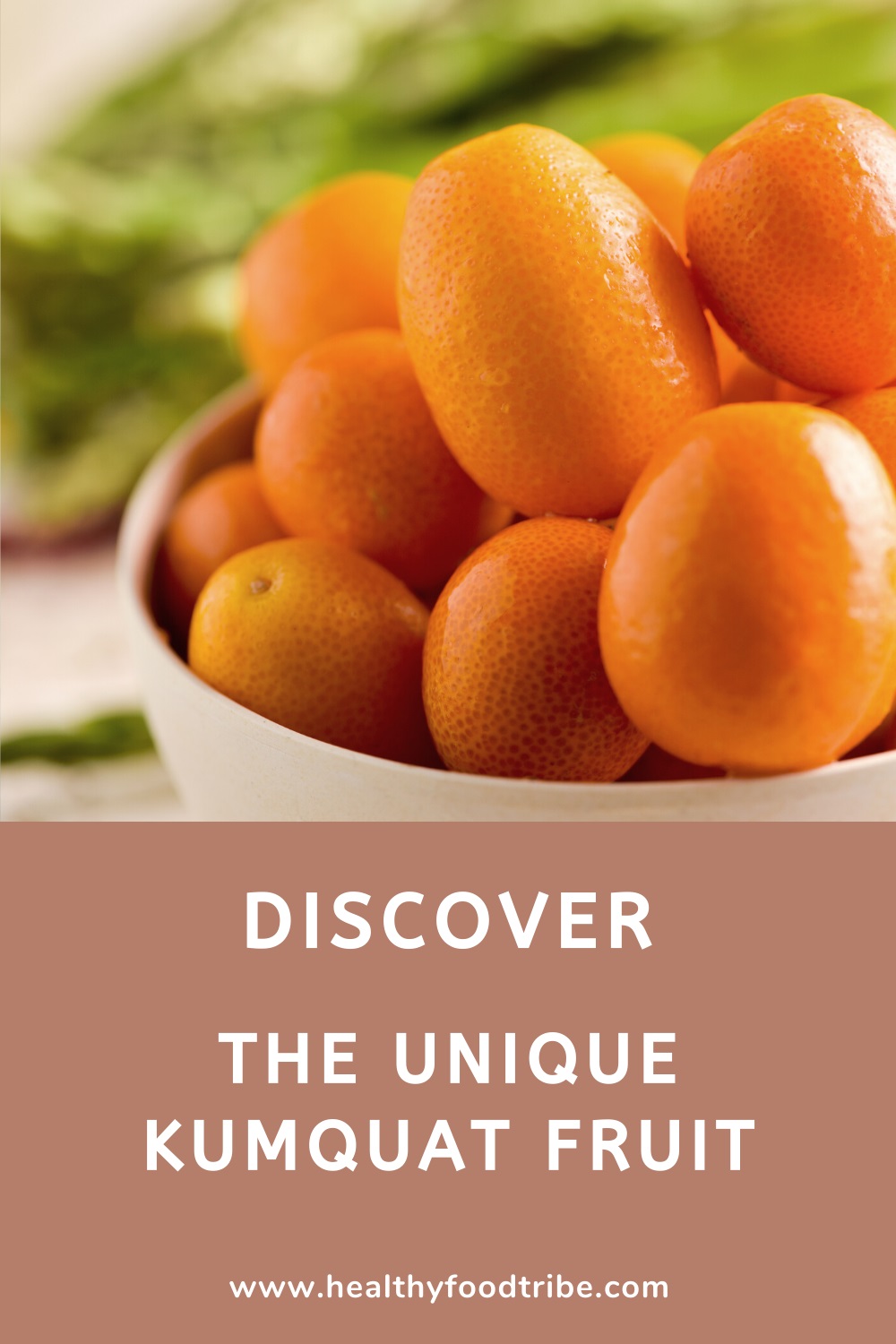
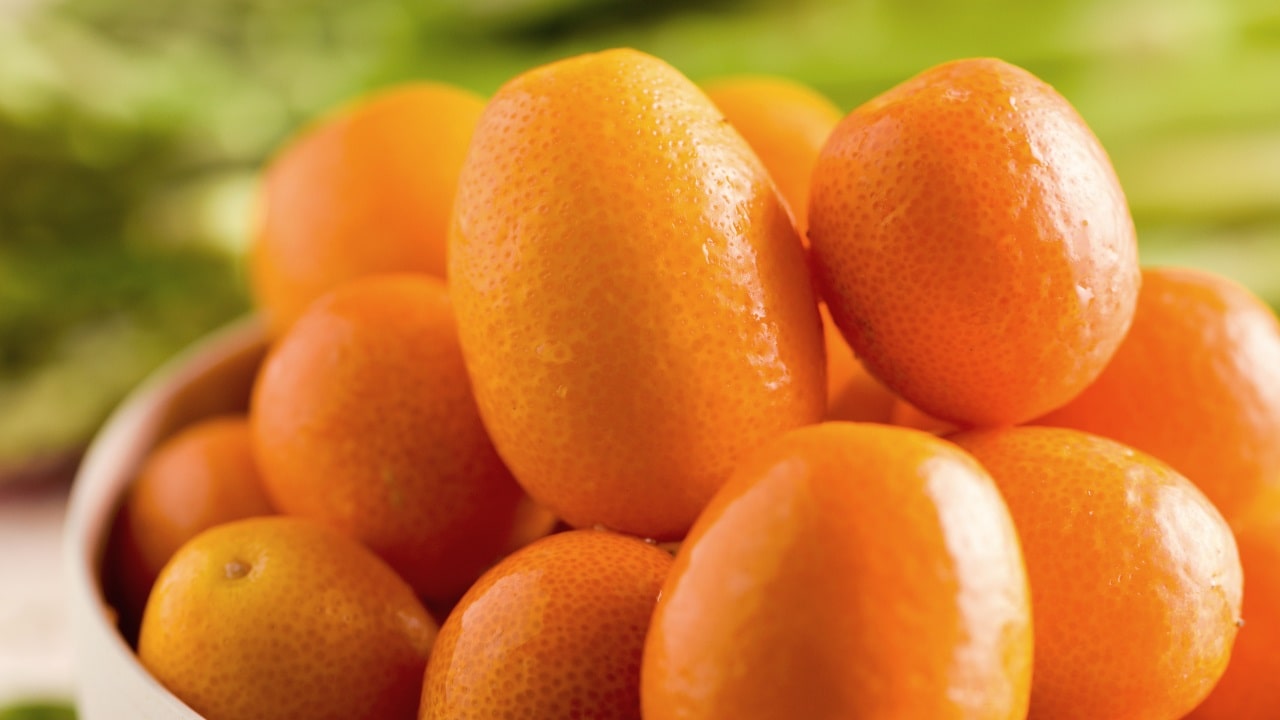
Kumquats are great, natural candy!
Yes! That’s probably the best way to describe kumquats.